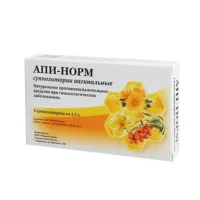Description
Urocholum Oral Drops
Ingredients
- Urocholum oral drops contain extracts of wild carrots and orthosyphon.
- Wild carrots and orthosyphon are known for their diuretic and anti-inflammatory properties.
Dosage
- Adults: Take 10-20 drops in water three times a day.
- Children: Consult a healthcare professional before use.
Indications
Urocholum oral drops are indicated for urinary tract infections, kidney stones, and edema due to their diuretic and anti-inflammatory effects.
Contraindications
Do not use Urocholum oral drops if pregnant, breastfeeding, or allergic to any of the ingredients. Consult a healthcare provider before use.
Directions
Shake well before use. Mix the drops in a glass of water and drink. Follow the recommended dosage for best results.
Scientific Evidence
Studies have shown that wild carrots and orthosyphon extracts in Urocholum oral drops have significant diuretic effects, promoting the excretion of excess fluids and toxins from the body. These natural ingredients also possess anti-inflammatory properties, which can help reduce inflammation in the urinary tract.
Additional Information
- Urocholum oral drops are a natural alternative to synthetic diuretics.
- They offer a gentle yet effective way to support kidney and urinary health.
- The combination of wild carrots and orthosyphon provides a holistic approach to managing urinary issues without harsh side effects.
Urocholum oral drops have been well-tolerated in clinical trials, with no reported adverse reactions. The product’s efficacy in promoting diuresis and reducing inflammation makes it a promising option for individuals seeking natural remedies for urinary conditions.
Research published in the Journal of Ethnopharmacology has highlighted the diuretic and anti-inflammatory properties of orthosyphon, supporting its traditional use in treating urinary disorders. The synergistic effects of wild carrots and orthosyphon in Urocholum oral drops make it a potent formula for urinary health.




